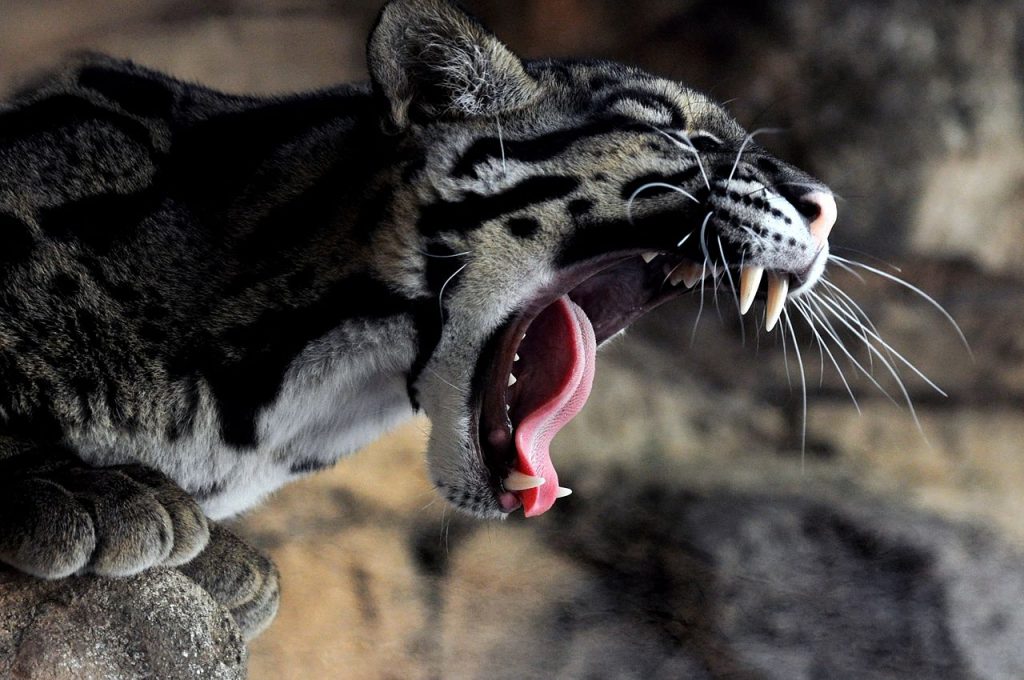What Animal Is It?

Every so often here at The Nature Nook, we’ll be posting pictures of animals to see if readers can guess what they are before the answer is revealed below. Our first What Animal Is It? is the clouded leopard, in recognition of the fact that today, August 4, is International Clouded Leopard Day.
Found in the forests of Asia, this secretive midsized cat is almost as mysterious today as it was nearly 200 years ago when it was first described. We do know, however, that it has a taste for the treetops. This wonderfully agile feline is an incredible arboreal hunter, capable of catching monkeys, civets and even birds in the trees, balancing itself with the longest tail, in relation to body size, of any cat. In fact, the clouded leopard is probably the most talented climber in the whole cat family. It is one of just two species of feline that can rotate its flexible ankles backwards (the other is the margay from South America), which allows it to climb down a tree headfirst with squirrel-like ease, move along horizontal branches while hanging beneath them like a sloth, and even dangle from a branch using just its hind feet. Its Malayan name is harimau-dahan, which means ‘branch tiger’.
With regard to the clouded leopard’s name, although it does have beautiful cloud-like markings on its body, it is not a leopard. It isn’t even part of the Panthera genus of ‘big cats’, where true leopards – along with lions, tigers and jaguars – sit. Originally, there was only one recognised species of clouded leopard, but scientists ‘split’ the species in 2006 because of genetic differences between those found on mainland Asia and those found on the islands of Borneo and Sumatra. The images in this article are of the clouded leopard; the second, more recently recognised species, which tends to be darker in colour and has smaller cloud markings, is now known as the Sunda clouded leopard.

Image Source: Dps austin
Relative to its size, the clouded leopard has the longest upper canine teeth of any predator. At 5 cm long, they’re not much shorter than those of a tiger, even though a tiger can be up to 10 times larger in body size. It seems as though the clouded leopard is the closest living species we have to the extinct sabre-toothed cats.
If you want to find out more about International Clouded Leopard Day, check out The Aspinall Foundation, a charity that works to promote wildlife conservation around the world. One of the zoos that the charity owns, Howletts Wild Animal Park in Kent, held the world’s first Clouded Leopard Day in 2018 and currently houses 12 of these enigmatic felines.
